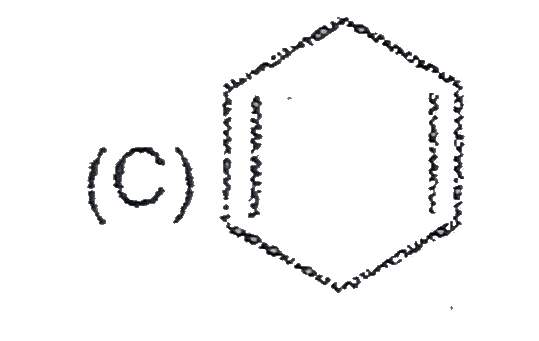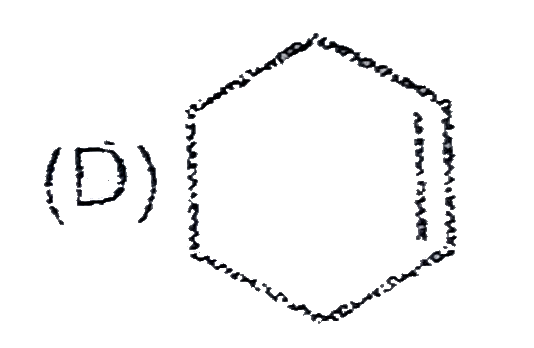Why Λ∘m for CH3COOH cannot be determined experimentally ?
To understand why the molar conductance at infinite dilution (λm^∞) for acetic acid (CH₃COOH) cannot be determined experimentally, we can break down the explanation into several steps:
1. Definition of Molar Conductance:
Molar conductance (λ) is defined as the conductance of an electrolyte solution divided by its molar concentration. It is a measure of how well ions in a solution can conduct electricity.
2. Infinite Dilution Concept:
The concept of infinite dilution refers to the state where the concentration of the electrolyte approaches zero. At this point, the interactions between ions are minimal, and the molar conductance can be determined accurately.
3. Strong vs. Weak Electrolytes:
Strong electrolytes, such as HCl, completely dissociate into their ions in solution. This complete dissociation allows for a clear linear relationship between molar conductance and concentration, which can be extrapolated to find λm^∞.
4. Behavior of Weak Electrolytes:
Acetic acid (CH₃COOH) is a weak acid and does not completely dissociate in solution. Instead, it establishes an equilibrium between the undissociated acid and its ions (H⁺ and CH₃COO⁻). This means that even at high dilution, not all acetic acid molecules will dissociate.
5. Graphical Representation:
When plotting molar conductance against concentration for a weak electrolyte like acetic acid, the graph does not yield a straight line. Instead, it shows a curve because the increase in molar conductance is not linear due to the incomplete dissociation of the acid.
6. Extrapolation Issues:
Since the graph for a weak electrolyte curves rather than being linear, extrapolating this curve to find the intercept (which would represent λm^∞) is not possible. The curve may approach the y-axis but does not touch it, indicating that λm^∞ cannot be determined experimentally.
7. Conclusion:
Therefore, the inability to completely dissociate and the resulting non-linear relationship between molar conductance and concentration for acetic acid means that λm^∞ cannot be experimentally determined.
Molar conductance (λ) is defined as the conductance of an electrolyte solution divided by its molar concentration. It is a measure of how well ions in a solution can conduct electricity.
The concept of infinite dilution refers to the state where the concentration of the electrolyte approaches zero. At this point, the interactions between ions are minimal, and the molar conductance can be determined accurately.
Strong electrolytes, such as HCl, completely dissociate into their ions in solution. This complete dissociation allows for a clear linear relationship between molar conductance and concentration, which can be extrapolated to find λm^∞.
Acetic acid (CH₃COOH) is a weak acid and does not completely dissociate in solution. Instead, it establishes an equilibrium between the undissociated acid and its ions (H⁺ and CH₃COO⁻). This means that even at high dilution, not all acetic acid molecules will dissociate.
When plotting molar conductance against concentration for a weak electrolyte like acetic acid, the graph does not yield a straight line. Instead, it shows a curve because the increase in molar conductance is not linear due to the incomplete dissociation of the acid.
Since the graph for a weak electrolyte curves rather than being linear, extrapolating this curve to find the intercept (which would represent λm^∞) is not possible. The curve may approach the y-axis but does not touch it, indicating that λm^∞ cannot be determined experimentally.
Therefore, the inability to completely dissociate and the resulting non-linear relationship between molar conductance and concentration for acetic acid means that λm^∞ cannot be experimentally determined.
Topper's Solved these Questions
- BOOK - CBSE COMPLEMENTARY MATERIALCHAPTER - ELECTROCHEMISTRY EXERCISE - SHORT ANSWER-I TYPE QUESTIONS (2 Marks)24videos
ELECTROCHEMISTRY
- BOOK - CBSE COMPLEMENTARY MATERIALCHAPTER - ELECTROCHEMISTRY EXERCISE - SHORT ANSWER-II TYPE QUESTIONS20videos
ELECTROCHEMISTRY
- BOOK - CBSE COMPLEMENTARY MATERIALCHAPTER - ELECTROCHEMISTRY EXERCISE - Assertion-Reason type2videos
ELECTROCHEMISTRY
- BOOK - CBSE COMPLEMENTARY MATERIALCHAPTER - COORDINATION COMPOUNDSEXERCISE - LONG ANSWER TYPE QUESTIONS3videos
COORDINATION COMPOUNDS
- BOOK - CBSE COMPLEMENTARY MATERIALCHAPTER - GENERAL PRINCIPLES AND PROCESSES OF ISOLATION OF ELEMENTSEXERCISE - Short Answer-II Type Questions5videos
GENERAL PRINCIPLES AND PROCESSES OF ISOLATION OF ELEMENTS
Similar Questions
Knowledge Check
- Question 1 - Select One
Assertion (A):∧∘.eq(CH3COOH) cannote be determines experimentally.
Reason (R):CH3COOH is a weak acid and DebyeHuckel Onsager equation cannot be used. Extrapolation method cannot be employed.AIf both (A) and (R) are correct, and (R) is the correct explanation of (A).BIf both (A) and (R) are correct, but (R) is not the correct explanation of (A).CIf (A) is correct, but (R) is incorrect.DIf (A) is incorrect, (R) is correct. - Question 2 - Select One
Which of the following cannot be determined experimentally.
AOrderBRateCRate constantDMolecularity - Question 3 - Select One
 , CH3CH2COOH
, CH3CH2COOH
Identify X:ACH3−CH2−C≡C−CH2−CH3BCH3−C≡CH2−CH2−CH3C D
D
Why on dilution the Λm of CH3COOH increases drastically, while that of CH3COONa increases gradually?
View SolutionWhy on dilution the Λm of CH3COOH increases drastically, while that of CH3COONa increases gradually ?
View Solution(b) Suggest a way to determine the Λ∘m for CH3COOH.
View SolutionCH3COCH3 can be converted into CH3COOH by
View SolutionMolar conductivities (Λ∘m) at infinite dilution of NaCl,HCl and CH3COONa arc 126.4,425.9 and 91.0Scm2mol−1 respectively. Λ∘m for CH3COOH will be
View Solution

